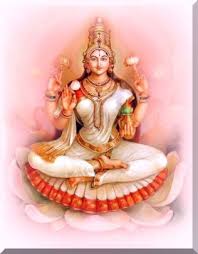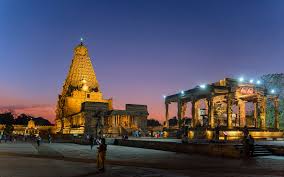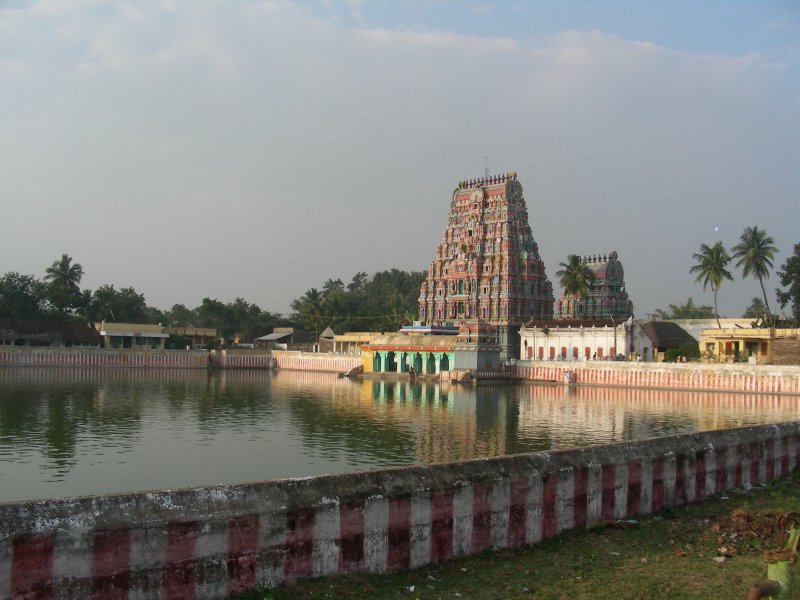Raga Lakshana – Madhavamanohari
PREFACE:
One of the first impressions that an observer or student of our music gets is that Muthusvami Dikshitar was a strict conformist to sampradaya and to the raga lakshanas that were laid out by Venkatamakhi. But if one undertakes a scrupulous analysis of the Sangita Sampradaya Pradarshini, one can see how hollow that statement is. Dikshitar was a vageyyakara-par-excellence and he never himself considered absolutely bound by past practice or tradition. If occasions or situations so warranted he deemed it fit to depart from tradition or from the laid down raga lakshana. Like Tyagaraja, Dikshitar was an innovator who endeavored to enhance melody and aesthetics by redefining raga lakshanas and thus redraw the musical landscape of Carnatic Music.
The conception of the raga Madhavamanohari under the Sriraga mela, by him illustrates how he transformed the existing raga lakshana through a subtle value-add, driven by aesthetics, which is the subject matter of this blog.
For me this blog post has a collateral objective. I dedicate this to Prof. C S Seshadri, a distinguished mathematician on the occasion of his having been very recently honoured with the Padmabushan for his outstanding contribution in his field of eminence. The uniqueness of Dikshitar’s version of Madhavamanohari was unveiled to me by him a few summers ago one afternoon when he taught me the kriti as notated in the Sangita Sampradaya Pradarshini(SSP)¹ Having been fed on Semmangudi Srinivasa Iyer’s benchmarked version, Prof Seshadri’s rendition of the kriti opened my eyes to that hitherto unknown side of Dikshitar.
Read on!
INTRODUCTION:
Madhavamanohari is a raga from the Dikshitar School placed under the Sri raga mela. The extant version of the raga is as illustrated by Dikshitar’s composition ‘Mahalakshmi Karunarasalahari’. The first mention of the raga in musical works, is encountered in the Sangita Saramruta (1735) of King Tulaja, where it is given as a janya of Sri raga mela. The next mention of this raga is in the Sangita Sampradaya Pradarshini(SSP)¹of Subbarama Dikshitar(SD). Neither Tyagaraja nor Syama Shastri have composed in Madhavamanohari. However 3 latter day compositions are found in this raga.
- One is “Kripasagara” by Harikesanallur Muthiah Bagavathar.
- The other is “Madhava Priya Mahima” composed in this raga by a composer by name Hari Nagabushanam (1884-1959).
- The raga also finds place in the Manohari Ragamalika composition “Manohari Maatangi” composed of Spencer Sri Venugopal in 9 ragas which have Manohari as suffix in their names.
In so far as this blog post is concerned, I am basing the analysis on the strength of the solitary Dikshitar composition and its notation as found in the SSP.
RAGA LAKSHANA:
Lets first look at Tulaja’s mention as found in the Sangita Saramruta. According to him, th features of Madhavamanohari are:
- A sampurna raga with dhaivata varja in the aroha and the pancama in the avaroha
- Shadja is graha, amsa and nyasa
- Prayogas include: GMPDMGR, GMGGGMPNDMPND, NSSNDMNDMGRGMG, RDNSR & NDMGRS
Based on the Sangita Saramruta , we see that both Sriranjani and Madhavamanohari came into vogue about the begining of the 18th century.In the SSP Subbarama Dikshitar provides us the following references & notes for Madhavamanohari:
- Mention of the raga as a bhashanga janya in the Sriraga raganga gitam attributed to Venkatamakhi
- The lakshana shloka for the raga attributed to Venkatamakhin
- His commentary on the raga lakshana
- Illustration of the raga through the notation of the compositions:
- Gitam attributed to Venkatamakhi
- ‘Mahalakshmi” of Muthusvami Dikshitar
- His Sancari
Subbarama Dikshitar’s account of Madhavamanohari can be summarized as under:
Arohana: S R2 G2 M1 P N2 D2 N2 S
Avarohana: S N2 D2 M1 G2 R2 S
Jeeva svaram: Madhyama
Visesha prayogams: MNDNs nGRMGRS, PD1M
Analysis:
The Sangita Saramruta Of Tulaja is the first of the musicological texts which offers a glimpse of the evolution of Madhavamanohari as well as it sibling Sriranjani. The Sangita Sampradaya Pradarshini offers captures for us the svarupa of the raga via the 3 extant notated compositions namely the gitam attributed to Venkatamakhi, the kriti “Mahalakshmi Karunarasalahari” of Dikshitar and the sancari of Subbarama Dikshitar. In SSP, along with Sriranjani and Madhyamavathi ragas, Madhavamanohari is classified as a bhashanga janya of the Sriraga mela. Madhavamanohari is mentioned in the Sriraga ragaanga gitam as a bhashanga janya. One must understand why ragas like these are labeled as “bhashanga” in SSP by Subbarama Dikshitar. The term as used by SD is meant to indicate the bhasha or regional origin of the raga in contrast to the modern connotation of the term. Lets now look back in time , probably the first half of the 18th century and in Tulaja’s time, as to how Madhavamanohari was. The surviving earliest composition available to us is the gitam .
Venkatamakhi’s Raga Lakshana:
The gitam is most probably a composition of Muddu Venkatamakhi or Venkata Vaidyanatha Dikshita, the descendant of Venkatamakhi. The gitam lacks the colophon & the raja mudra and hence attribution is impossible. Anyways the the summary of the raga lakshana as per this gitam is like this:
Arohana: S R2 G2 M1 P N2 D2 N2 S
Avarohana: S N2 D2 M1 G2 R2 S
Jeeva svaram: Madhyama
Visesha prayogams: MNDNs nGRMGRS, GrND, GMGR
Jiva/Amsa svara: Ma and Ga as seen in profusion.
Notes: By and large the composition is centered in the uttaranga and in the tara stayi. Also given the murccanas as above, its clear that the raga has been conceived as a upanga janya of Sri. As per Tulaja, Dhaivata is absent in the arohana while it is vakra in Subbarama Dikshitar’s assessment. The addition of the vakra dhaivata should have happened in the period interim to Tulaja and Muddu Venkatamakhi.
Moving on, next we have the solitary composition of Dikshitar – ‘Mahalakshmi Karunarasalahari’ in Adi tala.
Dikshitar’s Conception of Madhavamanohari:
When one analyses the Dikshitar composition, it can be noticed that he sticks to the contours of the raga as laid down in the gitam. However he introduces the note D1(suddha dhaivata) ( a note foreign to the Sriraga mela) via the murccana ‘P/D1M1’ to his conception of Madhavamanohari (the / indicating the ettra jaaru or the upward glide – the jaaru gamaka adornment).The following is the summary of his conception.
- Characteristically enough Dikshitar commences the pallavi and the anupallavi with the raga’s jiva svara namely M1.
- He uses the characteristic visesha murccana MNDMGR, for the lyric “Mamava Madhavamanohari’ in the pallavi.
- The motif PD1M is used a total of 5 times, once in the anupallavi and 4 times in the carana.
- The notes M1 and G2 are ornamented with the kampita gamaka.
The salient features of Dikshitar’s Madhavamanohari are:
Arohana: S R2 G2 M1 P N2 D2 N2 S
Avarohana: S N2 D2 M1 P D1 M1 G2 R2 S
Salient murccanas : M1N2D2M1, P/D1M1
Jiva svaras ; M1 and G2
Gamaka: Kampita on M1 and G2, jaru from P to D1
In summary as one can see the improvisation that Dikshitar has made is in effecting the use of the motif PD1M1 to the preexisting form of Madhavamanohari or in other words, in modern parlance, converted it into a bhashanga derivative under Sri with D1 as anya svara.
THE MANOHARI OF MADHAVA:
This composition of Dikshitar is a generic one on Goddess Mahalakshmi and is not ascribable to any kshetra as such details are not found in the composition. It carries Dikshitar’s standard colophon “guruguha” in the anupallavi and the raga mudra in the pallavi itself. Dikshitar uses the raga name to signify that she is beloved one (Manohari) of Madhava (Lord Vishnu). Though not categorized so by Subbarama Dikshitar or other authorities on Dikshitar’s compositions, there are those who hold the belief that this kriti is a part of the set of 7 kritis, the so called “Lakshmi Saptakriti Mala”, dedicated to Goddess Mahalakshmi. The other members of this “informal list” includes:
- Hariyuvatim Haimavatim – Hemavati or Desisimharava
- Hiranmayeem Lakshmim – Lalitha
- Sri Bhargavi – Mangalakaisiki
- Sri Varalakshmi- Sri
- Varalakshmim Bhajare – Saurashtra
- Mangala Devataya – Dhanyasi
It is worth noting that all the above kritis said to form part of this so called series or set of compositions are found notated in the SSP.
Apart from the SSP (1904), this kriti in Madhavamanohari has also been published by⁴:
- The Tatchur Brothers in Gayakasiddanjanam (Telugu, 1904-1906)
- Veenai Ramanujacarya in Sangeetha Sarvartha Sara Sangrahamu (Telugu,1908)
- S Ranganatha Iyer in Sangita Rajarangam and Sangita Vidyarangam (Malayalam, 1920)
- K V Srinivasa Iyengar in Adi Gana Bhaskaram(Telugu, 1943)
- Veenai Sundaram Iyer in Dikshita Kritimala Vol V
- Rangaramanuja Iyengar in Kritimanimalai, Vol IV
DISCOGRAPHY &ILLUSTRATIONS OF THE INTERPRETATIONS OF DIKSHITAR’S MADHAVAMANOHARI:
The credit of popularizing this composition on the concert platform goes to Semmangudi Srinivasa Iyer. He has popularized a good number of Dikshitar’s rare compositions such as Sriramam Ravikulabdhi Somam in Narayanagaula and the Gopikavasantam composition “Balakrishnam Bhavayami”. Apparently Sangita Kalanidhi and veena vidvan K S Narayanasvami also used to render this composition beautifully. However no recording of his rendition exists.
First is the audio clip of Semmangudi Srinivasa Iyer, rendering the composition, possibly rendered in a concert in Mumbai. His interpretation continues to be the standard version for many performing musicians as well as students of music. One can notice that Semmangudi’s version tracks to the notation in the SSP, except for the fact that he eschews usage of D1. D2 is utilized by him throughout the composition. The measured gait in the 2 kalai adi tala is seen in his rendition.
Audio Clip 1: Semmangudi Srinivasa Iyer rendering Mahalakshmi
Semmangudi’s version does not conform to the newer conception of Dikshitar as it is bereft of D1. In modern parlance & usage of the term upanga/bhashanga, Semmangudi’s version is in the upanga version.
Second is the rendering of the composition by Sangita Kalanidhi R Vedavalli². The clip is a portion of the caranam featuring the usage of D1. As one can observe the kalapramana of the rendition is slightly faster than the Semmangudi version. Vid.Vedavalli adheres to the SSP notation in full. One can see that she emphasizes D1 in the kriti as in “baktiyukta manasa” , “amara vandite”and “neerajasanaste”( those underlined in bold font are the D1 usages as per the SSP notation). Needless to say therefore that her version of the raga is in its bhashanga form as was conceptualized by Dikshitar.
Audio Clip 2: Vid R Vedavalli rendering Mahalakshmi –An excerpt
Next is the rendition of Sangita Kalanidhi D K Pattamal.The following points stand out in her rendition:
- Her version is different from Semmangudi Srinivasa Iyer’s in that its kalapramana is slightly faster. In the anupallavi section attention is invited to the lyrics “…..manonmani ma(M1)ra(P)ja(D1)na(M1)ni(G2)”. The D1 ‘seems’ very faintly intoned & if indeed so, its encountered in her version only at this place in the entire composition. As pointed out earlier, D1 is notated in 5 places in the SSP. In all these places in contrast to Semmangudi’s approach, Smt Pattammal loops the sancara at the pancama itself as if there is a hesitation to render the D1. In Semmangudi’s version, instead of D1, D2 is substituted and rendered.
- In the carana portion with the lyrics “….varijaasanadyamara vandite na(P)ra(N2)da(N2)adi(s) muni vandite..”, we hear PNNs , with the janta Ni sounding as in Ritigaula, closer to the tarashadja & not NDNS as it should be.
It is interesting to note that from a patanthara perspective, Smt D K Pattamal traces to Ambi Diksitar himself.
Audio Clip 3: Sm D K Pattammal rendering Mahalakshmi
Third is the clip of a rendering of the composition by Vidvan Vijay Siva³. His version closely follows Smt Pattammal’s version . Again D1 is not seen in his rendition in the carana portion.
Audio Clip 4: Vid Vijay Siva rendering Mahalaksmi-An Excerpt
The final clip is of the veteran vainika Smt Kalpakam Svaminathan. Below is an excerpt of her rendition featuring the same madhyamakala portion ” varijaasana- dyamara vandite…”. In her version as well the D1 is muted and does not sound conspicuous .
Audio Clip 5: Vid Kalpakam Svaminathan rendering Mahalakshmi – An Excerpt
The only other commercially available recording of “Mahalakshmi” is by Sangita Kalanidhi M S Subbulakshmi and as I understand it is on the lines of Semmangudi Srinivasa Iyer’s version.
If one were to interpret the notation in SSP, in my opinion, of this composition, the D1 should be strongly intoned and is not a weak or a passing note. The analysis here is based on that premise. The justification for such an interpretation is detailed in the section below.
WHY DID DIKSHITAR REDEFINE THE MUSICAL CONTOUR OF MADHAVAMANOHARI:
First a disclaimer is in order. The foregoing is my surmise and I think it is plausible with the set of facts we have. And I have no other authority for this. Given the information at our disposal especially the mention in the Saramruta one can surmise that this raga is a circa 1700 entrant into our music system.
Sriranjani (SRGMDNS/SNDMGRS) is another raga of the Sriraga clan which shares a very close melodic affinity/svarupa with Madhavamanohari. Muddu Venkatamakhi is his ragaaga gitam for Sriraga gives both of them as as bhashanga janyas.The ascent murccana MNDNS though prescribed for Madhavamanohari is used in Sriranjani as well, which SD himself gives in the ragalakshana for Sriranjani. So the common jiva sancaras like MNDNS and RGMRGS cause Sriranjani and Muddu Venkatamakhi’s( or Tulaja’s) older Madhavamanohari to melodically overlap. Also the pancama, found in Madhavamanohari’s arohana, is apparently weak as it is in essence tagged on to the prayoga PNDNS. So it does not qualitatively contribute, to enable Madhavamanohari to be melodically distinct. from Sriranjani. One can also consider the possibility of Madhavamanohari being a derivative of Sriranjani itself. One can surmise that Sriranjani itself being “regional” /bhasha in origin, it is plausible another variant of Sriranjani existed with pancama in its arohana. Though this “with pancama” form of Sriranjani was assimilated into the music world formally with the nomenclature of Madhavamanohari, it probably couldn’t get sufficient traction with practitioners/listeners because of its melodic closeness to the more popular pancama varja Sriranjani.
Confronted with this problem, Dikshitar utilized the anga feature to differentiate and enhance the musical material of Madhavamanohari. The use of notes, foreign to the parent raganga is only via the use of the anga or a murccana and not by a plain vanilla addition of the individual note(s) themselves, if we were to take Dikshitar’s construction as example. The anga or the motif that Dikshitar chose to embellish Tulaja’s & Muddu Venkatamakhi’s older Madhavamanohari with, was the P/D1M1. The embellishment P/D1M1 brings a different quality & uniqueness to the Madhavamanohari of Dikshitar.
CONCLUSION:
The SSP abounds in many such examples where one can see that Dikshitar departs from the existing lakshana and proceeds to expand the scope of the raga or embellish the raga lakshana appropriately. His kriti(s) so created, itself becomes the lakshana for us. Again it wouldnt be far from truth to state that nothing would please Dikshitar more if we were to sing his compositions in the true spirit that he had composed them.And in this instant case, musicians should render the krithi with the P/D1M. Again to adhere to the path he has shown, the SSP and the notation therein serves us as the beacon lights.
BIBLIOGRAPHY/REFERENCES:
- Subbarama Dikshitar (1904) Sangita Sampradaya Pradarshini (Telugu) and its Tamil translation published the Music Academy, Madras.
- R Vedavalli- Album-“Varalakshmi Vrata Paadalgal” – Cassette # GCR309 – Produced and Marketed by Giri Trading Agency P Ltd, Chennai 600004
- Vijay Siva(2003) –Album -“Mayuranatham – Compositions of Muthuswami Dikshitar” – CDNF 147791 –Produced by Saregama India Ltd, Calcutta, India.
- Dr V Raghavan (1975)- “Muttuswami Dikshitar”- Special Bicentenary Number – National Center for Performing Arts – Quarterly Journal – Vol IV, Number 3 September 1975
- Oppiliappan Kovil Varadacari Satakopan(2001) -‘Dikshitar’s Mahalakshmi Kritis’ – Available as an eBook online at http://www.scribd.com/doc/1028746/mahalakshmi-kritis and at http://www.ahobilavalli.org/mahalakshmi_kritis.pdf



